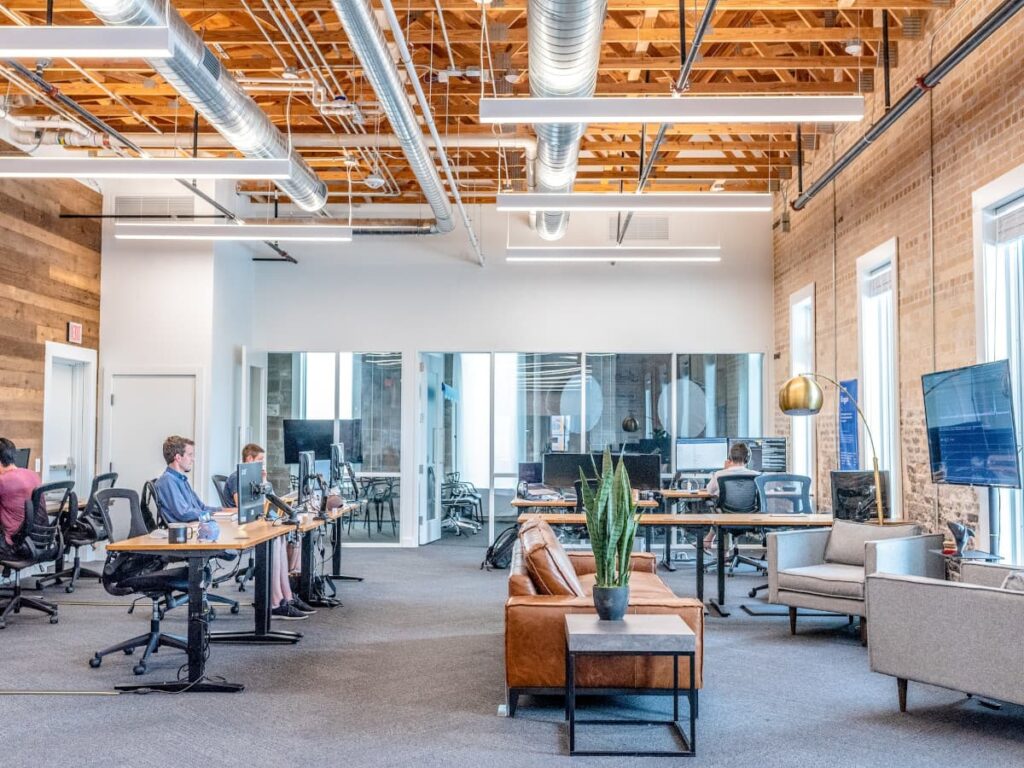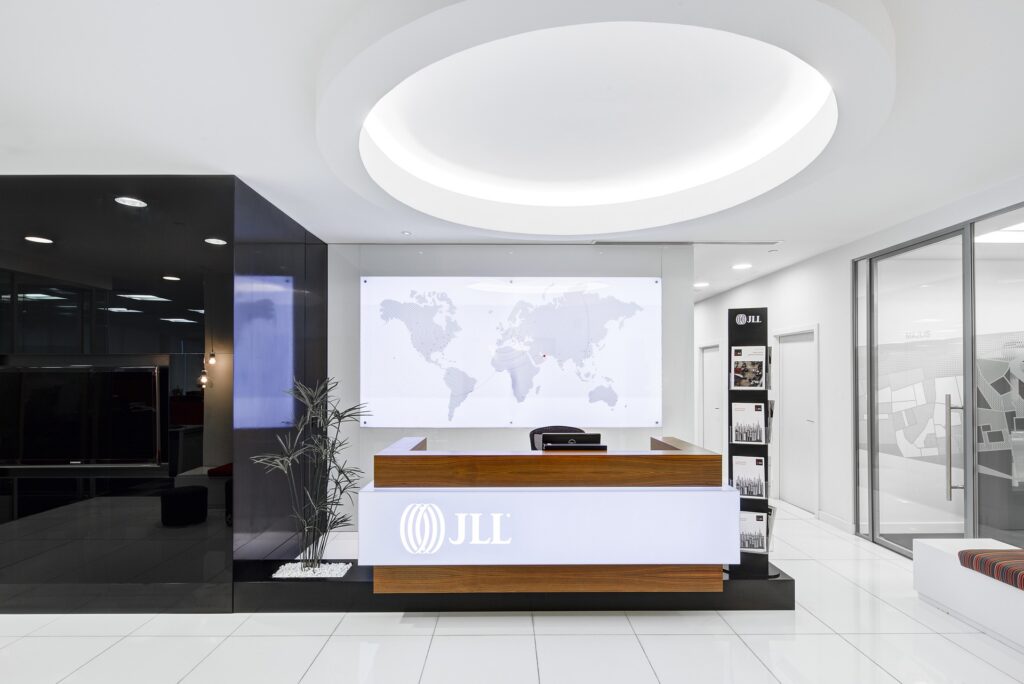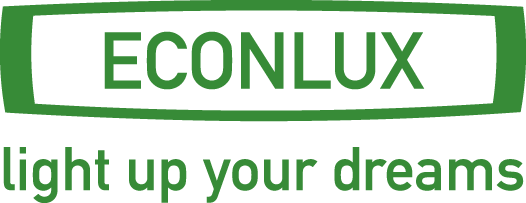Sunlight has a significant influence on people’s mental health and performance. Therefore, artificial lighting also plays an important role in improving health and mood, as well as performance and safety in work environments. In addition, modern LED lighting impresses with its enormous energy-saving potential. The conclusion is that, in addition to efficiency considerations, the duty of care and employee loyalty considerations, the permanently noticeable energy shortage with rising prices all speak in favour of reviewing and optimising the lighting situation at workplaces.
The sun as the central source of natural light has an enormous influence on our well-being and health. Sunlight is one of the best sources of vitamin D, which is essential for strong bones and a healthy immune system. But not only that, it also has an important effect on mental health, it helps to improve mood and regulates sleep-wake cycles.
However, in modern life many people spend most of their time indoors, where they have limited exposure to natural light. The positive effects of sunlight on the body and psyche then often turn out to be (too) weak, which can result not only in less well-being but also in reduced work performance and even higher error rates. Good artificial lighting can help to create a pleasant and healthy working environment.
Studies have shown that poor lighting in the workplace can lead to fatigue, eye strain, headaches and stress. Workplace accidents also increase when workplace lighting is inadequate or incorrectly designed. Adequate lighting, on the other hand, can increase productivity and safety in the workplace and improve the well-being of employees.
Conversely, a study by Cornell University[1] showed that the switch to LED lighting in an industrial company led to an improvement in work safety and efficiency. Employees were able to perform tasks faster and more accurately and there were fewer accidents. The Fraunhofer Institute for Industrial Engineering also found in a study[2] that targeted lighting improves cognitive performance in the workplace.
But what exactly makes a “good” workplace lighting different from a bad one?
In the past, it was often assumed that lighting was “the brighter, the better”. This view is now outdated. Today, we know that in modern working environments, many more criteria need to be taken into account when it comes to creating a supportive lighting environment. This is because the requirements for brightness, angle of incidence or glare protection, reflection effects – and last but not least the rising energy costs – provide many influencing factors that play a role in a holistic lighting concept.
Instead of creating an “all-encompassing light mush”, forward-looking lighting concepts work with a variety of tricks: Backlighting, islands of light, intelligent demand-oriented lighting control and (sometimes subtle) changes in light colours throughout the day are just a few keywords.
For example, a 2017 study showed that the use of dynamic light, adjusted according to the time of day and season, can help regulate circadian rhythms (day/night rhythm) and improve sleep quality. Another 2018 study found that the use of artificial light with a higher blue content can help improve cognitive performance and attention span.
Furthermore, the use of artificial light can also improve safety and efficiency in work environments. Back in 2016, a study showed that the use of LED lighting in a warehouse helped reduce accident rates by 75%. Another study from 2017 found that using artificial light with a higher colour temperature can help improve the accuracy and efficiency of tasks that require fine detail.

LED lamps permit a wide variety of solutions with minimised energy requirements
In general, modern LED lamps play a decisive role in the lighting of working environments today. Not only are they highly energy-efficient and durable, they also offer a wide range of colour temperatures and colour spectra. At the same time, they can be manufactured in a wide variety of shapes, including very flat or compact ones – and they can be controlled electronically with even greater flexibility.
This makes it possible to create dynamic lighting systems that adjust the light spectrum and colour temperature depending on the time of day and activity. In this way, the positive effects of light on mental health and well-being can be optimally exploited.
For example, the colour temperature can be chosen differently depending on the time of day. While a warmer colour temperature can be used in the morning and evening to promote well-being and prevent problems falling asleep towards the evening, a cooler colour temperature can be used at midday to increase concentration and attention. In addition, the use of colours and lighting effects can help to create a pleasant and motivating working environment.
Recommendations for action in workplace lighting
Concluding, the following recommendations for action can be derived from current research for lighting in workplaces that optimally supports well-being, safety and performance:
- Use daylight wherever possible. Studies show that natural light has the most positive influence on the mood, health and performance of employees. Wherever possible, workplaces should therefore be designed to benefit from natural light – but glare and overheating must be avoided.
- Ensure that lighting is adequate. Adequate lighting is necessary to maintain vision and create a comfortable working environment. Illuminance levels should be appropriate for the type of job and the age of the employees. Recommended illuminance levels can be found in the guidelines of the Workplace Ordinance.
- Use dynamic lighting. The performance and well-being of employees improves when lighting is adapted to the needs of the human biorhythm. For example, intelligent LED lamps that offer different light colours and intensities can be used here.
- Pay attention to the light colour. Light colour can have an influence on mood and well-being. Warm white light (2700-3000 K) is perceived as cosy and calming, while cool white light (5000-6500 K) can be activating and promote concentration. However, also take individual preferences and requirements into account here.
- Pay attention to colour rendering. Colour rendering index (CRI) describes how natural colours appear under a particular light source. High colour rendering (CRI>80) can help employees distinguish colours and perform visual tasks more accurately.
Summary
Overall, research shows that artificial lighting can help improve the mental health and well-being of employees in work environments. Purposeful lighting can also help regulate circadian rhythms, increase workplace safety and improve cognitive performance.
Modern LED lamps offer an excellent opportunity to create a pleasant and healthy working environment by providing a wide range of colour temperatures and colour spectra and enabling dynamic lighting systems.
Concrete recommendations for action help to create an optimal lighting climate in the workplace. At the same time, a professional lighting design using modern LED luminaires including a sophisticated lighting control system can “incidentally” also result in significant energy savings.
Do you have any questions about workplace lighting or hall or industrial lighting? We will be happy to help!

Sources
[1] Impact of Workplace Daylight Exposure on Sleep, Physical Activity, and Quality of Life. / Boubekri, Mohamed; I., Cheung; Reid, K. et al. 2013. Paper presented at 27th Annual Meeting of the Associated Professional Sleep Societies, Baltimore, Maryland, United States.
[2] “Optimierung von Arbeitsplätzen durch biologisch wirksame Beleuchtung” von Herbert Plischke et al. (2005)
Head image: Austin Distel via Unsplash



I appreciate your in-depth analysis of this topic.